Lift Off Time | March 11, 2021 – 08:13 UTC | 03:13 EST |
|---|---|
Mission Name | Starlink V1.0 L20 (Starlink RF Mission 3-1): the 21st Starlink mission |
Launch Provider | SpaceX |
Customer | SpaceX |
Rocket | Falcon 9 Block 5 B1058-6; 46 day turnaround |
Launch Location | Space Launch Complex 40 (SLC-40), Cape Canaveral Space Force Station, Florida, USA |
Payload mass | 15,600 kg (~34,000 lbs) (60 x 260 kg, plus dispenser) |
Where are the satellites going? | Starlink Shell 1: 53° 550 km circular Low-Earth Orbit (LEO); initial orbit: 53.06° 287 x 255 km |
Will they be attempting to recover the first stage? | Yes |
Where will the first stage land? | 633 km downrange on Just Read the Instructions Tug: Finn Falgout; Support: GO Quest |
Will they be attempting to recover the fairings? | GO Searcher and GO Navigator will recover the fairing halves from the water 707 km downrange |
Are these fairings new? | No, the active half has supported 1 previous flight and the passive half has supported 2 previous flights; 110 and 88 day turnaround times, respectively |
How’s the weather looking? | The weather is currently 90% go for launch (as of March 10, 2021 15:00 UTC) |
This will be the: | – 1st and 2nd fastest turnaround times of a fairing half ever at 88 and 110 days (Previous record: 127) – Fastest turnaround between the 5th and 6th flight of a booster at 46 days (Previous record: 59 days) – 1st re-flight of a fairing half recovered by NRC Quest – 3rd fastest turnaround time of a booster (behind 27 day and 38 day turnaround times) – 110th Falcon 9 launch – 52nd Falcon 9 flight with a flight proven booster – 56th re-flight of a booster – 4th 6th flight of a booster – 7th re-flight of a booster in 2021 – 76th booster landing – 19th landing attempt on JRTI – 7th launch for SpaceX in 2021 – 66th SpaceX launch from SLC-40 – 1st SpaceX launch on March 11 – 19th orbital launch attempt of 2021 Stats powered by boostertracker.com |
Where to watch | Official livestream |
What’s this all mean?
SpaceX’s Starlink V1.0 L20 (Starlink 20) mission will launch 60 Starlink satellites atop its Falcon 9 rocket. The Falcon 9 will lift off from Space Launch Complex 40 (SLC-40), at Cape Canaveral Space Force Station, in Florida. Starlink 20 will mark the 20th operational Starlink mission, boosting the total number of Starlink satellites launched to 1,265, of which ~1,140 are still in orbit around the Earth.
What is Starlink?
Starlink is SpaceX’s internet communication satellite constellation. The Low-Earth orbit constellation will deliver fast, low-latency internet service to locations where ground-based internet is unreliable, unavailable, or expensive. The first phase of the constellation consists of 5 orbital shells.
Starlink is currently in the “Better Than Nothing Beta,” allowing anyone in approved regions to order or preorder. However, for now, only higher latitudes are fully covered, so people of lower latitudes are currently only able to pre-order Starlink. After 24 launches SpaceX will achieve global coverage, but the constellation will not be complete until ~42,000 satellites are in orbit. Given SpaceX’s current Starlink production and launch rate, Starlink will have global coverage, excluding the poles, by the middle of 2021.
Once Starlink is complete, the venture is expected to profit $30-50 billion annually. This profit will largely finance SpaceX’s ambitious Starship program, as well as Mars Base Alpha.

What is the Starlink Satellite?
Each Starlink V1.0 satellite has a compact design and a mass of 260 kg. SpaceX developed a flat-panel design, allowing them to fit as many satellites as possible into the Falcon 9’s 5.2 meter wide payload fairing. Due to this flat design, SpaceX is able to fit up to 60 Starlink satellites and the payload dispenser into the second stage, while still being able to recover the first stage. This is near the recoverable Falcon 9’s payload capacity to LEO, at around 17 tonnes.
For how small each Starlink satellite is, each one is packed with high-tech communication and cost-saving technology. Each Starlink satellite is equipped with 4 phased array antennas, for high bandwidth and low-latency communication, and two parabolic antennas. The satellites also include a star tracker, which provides the satellite with attitude data, ensuring precision in broadband communication.
The Starlink satellites are also equipped with an autonomous collision avoidance system, which utilizes the DOD’s debris tracking database to autonomously avoid collisions with other spacecraft and space junk.
Currently, the Starlink satellites being launched into polar orbit have a laser communication system on board. This system is currently in version 0.9, however SpaceX is expecting all new Starlink satellites to be equipped with it by next year.
To decrease costs, each satellite only has a single solar panel, which simplifies the manufacturing process. To further cut costs, Starlink’s propulsion system, an ion thruster, uses krypton as fuel, instead of xenon. While the specific impulse (ISP) of krypton is significantly lower than xenon’s, it is far cheaper, which further decreases the satellite’s manufacturing cost.
Ion Power
Each Starlink satellite is equipped with the first Hall-effect krypton powered ion thruster. This thruster is used both for ensuring the correct orbital position, but is also used for orbit raising and orbit lowering. At the end of the satellite’s life, this thruster is used to deorbit the satellite.
What is the Starlink Satellite Constellation?
A satellite constellation is a group of satellites that work in conjunction for a common purpose. Currently, SpaceX plans to form a network of 11,716 satellites; however, in 2019 SpaceX filed an application with the Federal Communication Commission (FCC) for permission to launch and operate an additional 30,000 satellites as part of phase 2 of Starlink. To put this number of satellites into perspective, this is roughly 20 times more satellites than were launched before 2019.
Of the initial ~12,000 satellites, ~4,400 would operate on the Ku and Ka bands, with the other ~7,600 operating on the V-Band.
Due to the vast number of Starlink satellites, many astronomers are concerned about their effect on the night sky. However, SpaceX is working with the astronomy community and implementing changes to the satellites to make them harder to see from the ground and less obtrusive to the night sky. SpaceX has changed how the satellites raise their orbits and, starting on Starlink V1.0 L9, added a sunshade to reduce light reflectivity. These changes have already significantly decreased the effect of Starlink on the night sky.
Phase 1 Orbital Shells:
| Inclination (°) | Orbital Altitude (km) | Number of Satellites | |
| Shell 1 | 53.0 | 550 | 1,584 |
| Shell 2 | 53.2 | 540 | 1,140 |
| Shell 3 | 70.0 | 570 | 720 |
| Shell 4 | 97.6 | 560 | 336 |
| Shell 5 | 97.6 | 560 | 172 |
Shell 1
The first orbital shell of Starlink satellites will consist of 1,584 satellites in a 53° 550 km low-Earth orbit. This is the shell that SpaceX is currently filling, and it is expected that this shell will be complete by June 2021. Once complete, the first shell will provide coverage between roughly 52° and -52° latitude (~80% of the Earth’s surface), and will not feature laser links until replacement satellites will launch after 2021.
Shell 2
The second currently approved orbital shell will consist of 1,600 satellites in a 53.8° 1,100 km low-Earth orbit. However, in April of 2020, SpaceX submitted a request to the FCC to change this shell from the aforementioned orbit to a 570 km 53.2° LEO with 1,440 satellites. This updated orbital configuration would slightly increase coverage area and would drastically increase the bandwidth of the constellation. After the first shell’s completion and once approval is granted for this change it is expected that SpaceX will fill this shell alongside with the 4th shell next.
Shell 3
The third shell of Starlink phase 1 that is currently approved will host 400 satellites in a 70° 1,325 km orbit. Included in the FCC request submitted in 2020, SpaceX wants to change this shell to host 720 satellites in a 70° 570 km orbit. These satellites would significantly increase the coverage area, which would make the Starlink constellation cover around 94% of the globe.
Shell 4
For the fourth shell, SpaceX currently is permitted to launch 374 satellites into a 74° 1,130 km orbit. However, SpaceX has also requested that this shell gets changed. Shell 4 has been moved to a 97.6° 560 km orbit that will contain 336 satellites. SpaceX deployed 10 laser link test satellites into this orbit on their Transporter-1 mission to test satellites in a polar orbit.
Shell 5
The final shell of phase 1 currently allots for 450 satellites in a 81° 1,275 km orbit. However, just like shells 2, 3, and 4 SpaceX has requested to move this shell to another 97.6° 560 km low-Earth polar orbit with 172 satellites. It is unclear why this shell covers the same orbital plane as shell 4.
Phase 2 Orbital Shells:
Shell 6
The sixth orbital shell of Starlink satellites is permitted to consist of 2,493 satellites in a 42° 335.9 km LEO. This large number of satellites would decrease latency and increase bandwidth for lower latitudes.
Shell 7
The seventh Starlink shell permits SpaceX to deploy 2,478 satellites into a 48° 340.8 km low-Earth orbit. These satellites will further decrease latency and increase bandwidth for lower latitudes.
Shell 8
The final shell of Starlink phase 2 allows SpaceX to deploy 2,547 satellites in a 53° 345.6 km orbit.
SpaceX has until March of 2024 to be half complete with phase 1, and phase 1 must be complete by March of 2027. Phase 2 must be half complete by November of 2024, and be finished by November of 2027. Failure to do so could result in SpaceX losing their dedicated frequency band.
What is Falcon 9 Block 5?
The Falcon 9 Block 5 is SpaceX’s partially reusable two-stage medium-lift launch vehicle. Block 5 is the final iteration of the Falcon 9; the goal is to apply all the lessons learned from 56 previous Falcon 9 pre-Block 5 flights into a human-rated reusable rocket. The Falcon 9 contains 3 main components: a reusable first stage, an expendable second stage, and a reusable fairing.
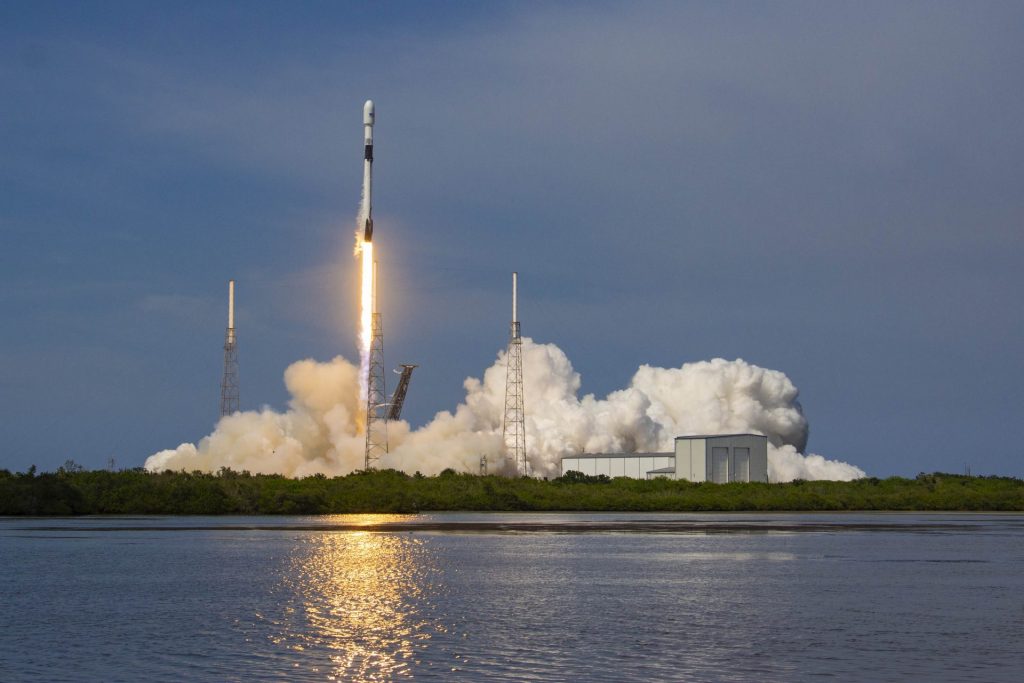
Block 5 updates:
SpaceX introduced a lot of changes on Block 5, allowing it to become the crew-launching reusable rocket that we know today. To start, the Composite Overwrapped Pressure Vessels (COPVs) had to undergo a complete redesign. NASA mandated the COPV redesign, as it had been the cause of both of the Falcon 9 failures: AMOS-6 and CRS-7.
Alongside with certification for human spaceflight, Block 5 came with a number of other major changes. To increase the amount of flight each booster could handle, and decrease the turnaround time, SpaceX reinforced the landing legs, upgraded the grid fins, and added a carbon fiber interstage. They also added heat-resistant external paint and upgraded the engines. For more information about the changes in Block 5, and the other Blocks of the Falcon 9, check out this video by the Everyday Astronaut:
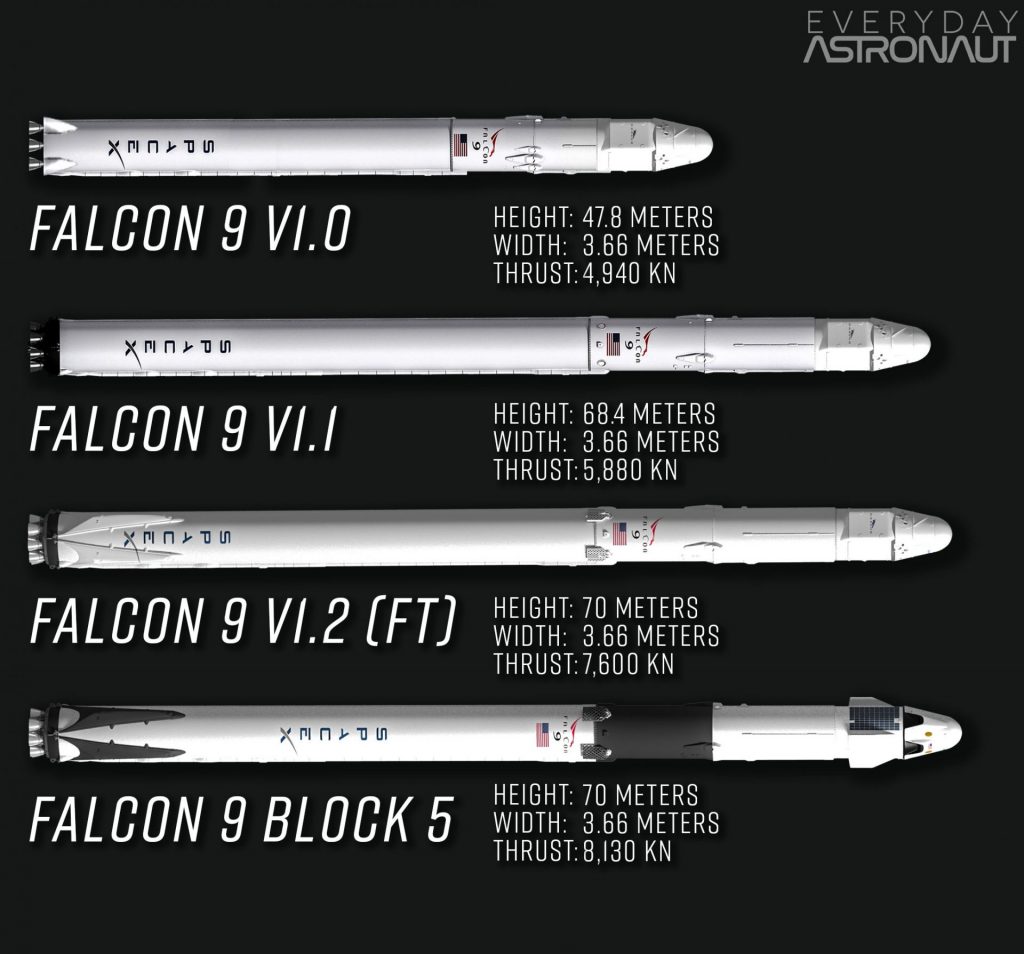
Falcon 9 Booster B1058
The booster supporting this mission is B1058, which has flown five times. Its maiden flight was the SpaceX Demonstration Mission 2, which launched Bob Behnken and Doug Hurley to orbit on May 30, 2020. The booster’s second flight was on ANASIS-II, which launched on July 20, 2020. 78 days later, the booster launched SpaceX’s Starlink V1.0 L12 mission, which lifted off on October 6, 2020. CRS-21 was B1058’s fourth flight, launching on December 6, 2020. Finally, Transporter-1 was the booster’s fifth mission, which launched 143 satellites into orbit on January 24, 2021. As Starlink 20 is B1058’s sixth flight, its designation will change to B1058-6.
Following stage separation, the Falcon 9 will conduct 2 burns. These burns will softly touch down the booster on Just Read the Instructions.
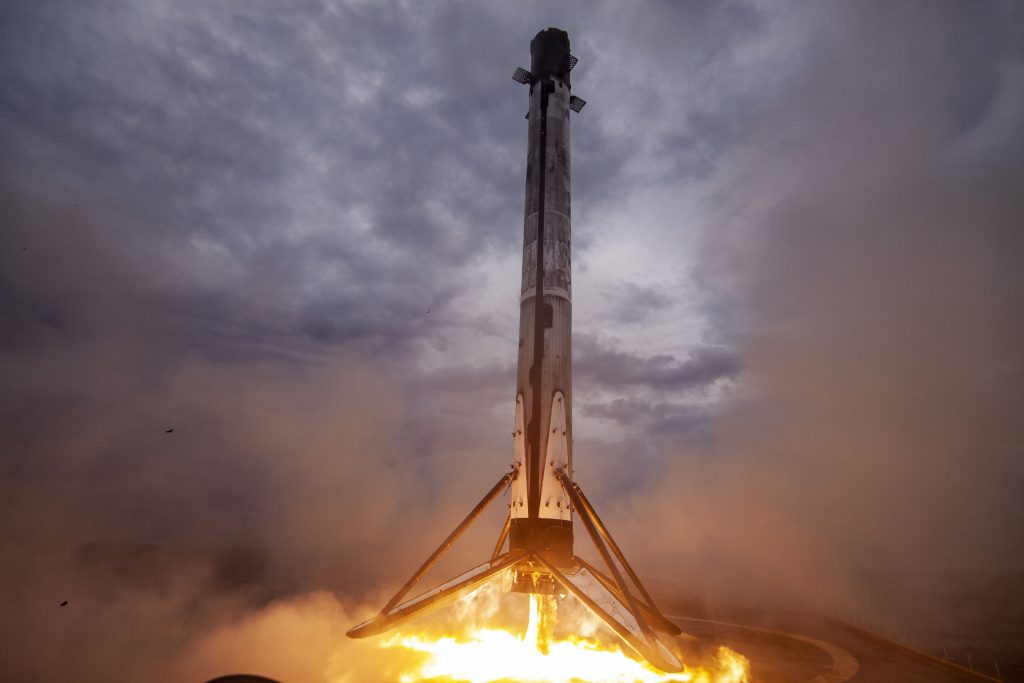
Falcon 9 Fairings
The Falcon 9’s fairing consists of two dissimilar reusable halves. The first half (the half that faces away from the transport erector) is called the active half, and houses the pneumatics for the separation system. The other fairing half is called the passive half. As the name implies, this half plays a purely passive role in the fairing separation process, as it relies on the pneumatics from the active half.
Both fairing halves are equipped with cold gas thrusters and a parafoil which are used to softly touch down the fairing half in the ocean (or, occasionally in GO Ms. Tree’s or GO Ms. Chief’s net). On Starlink 20, SpaceX will attempt to recover both the active and passive half with their recovery vessels GO Searcher and GO Navigator.
SpaceX is currently flying two slightly different versions of the Falcon 9 fairing. The new “upgraded” version has vents only at the top of each fairing half, by the gap between the halves, whereas the old version had vents placed spread equidistantly around the base of the fairing. Moving the vents decreases the chance of water getting into the fairing, making the chance of a successful scoop significantly higher.
Fairings on this mission
On Starlink 20, the active fairing half has supported one previous flight: Sentinel-6A. The fairing half was successfully recovered from the water by NRC Quest, marking the first refight of a fairing that NRC Quest retrieved. The passive fairing half previously flew on the ANASIS-II and SXM-7 missions. The half has successfully been both caught by GO Ms. Chief and recovered from the water by GO Searcher. Both of these halves will set reuse records, as they are the two fastest turnaround times to date.
*the flight history provided by Colin Fletcher
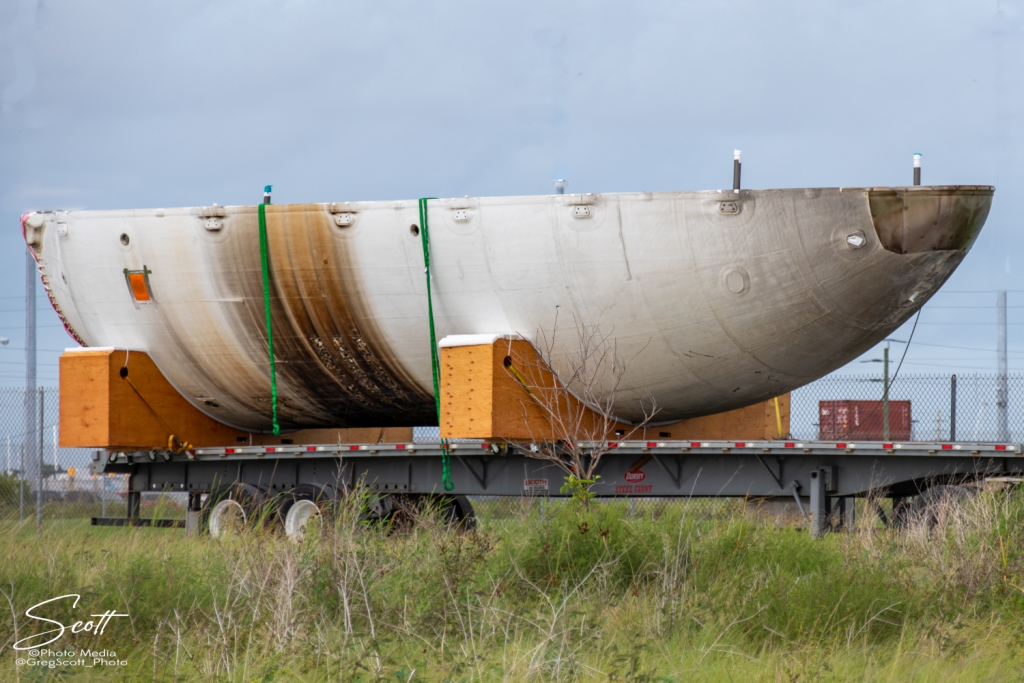
An active Falcon 9 fairing half (Credit: Greg Scott) 
Falcon 9 passive fairing half (Credit: Greg Scott) 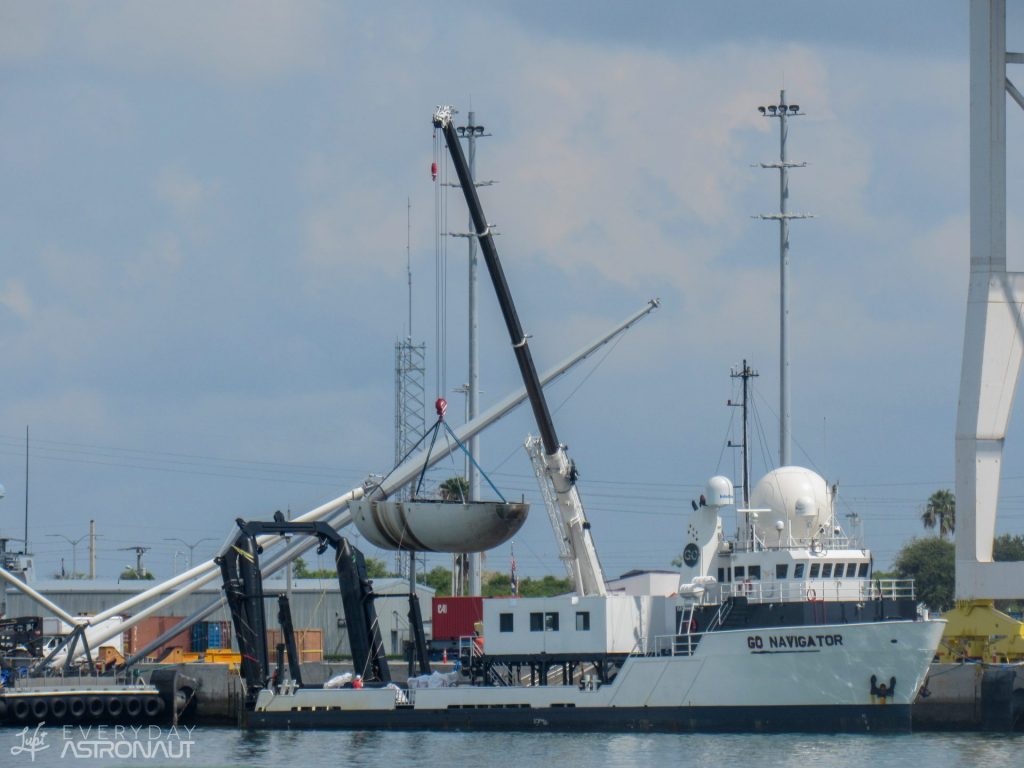
Half of the fairing being taken off Go. Navigator. (Credit: Lupi) 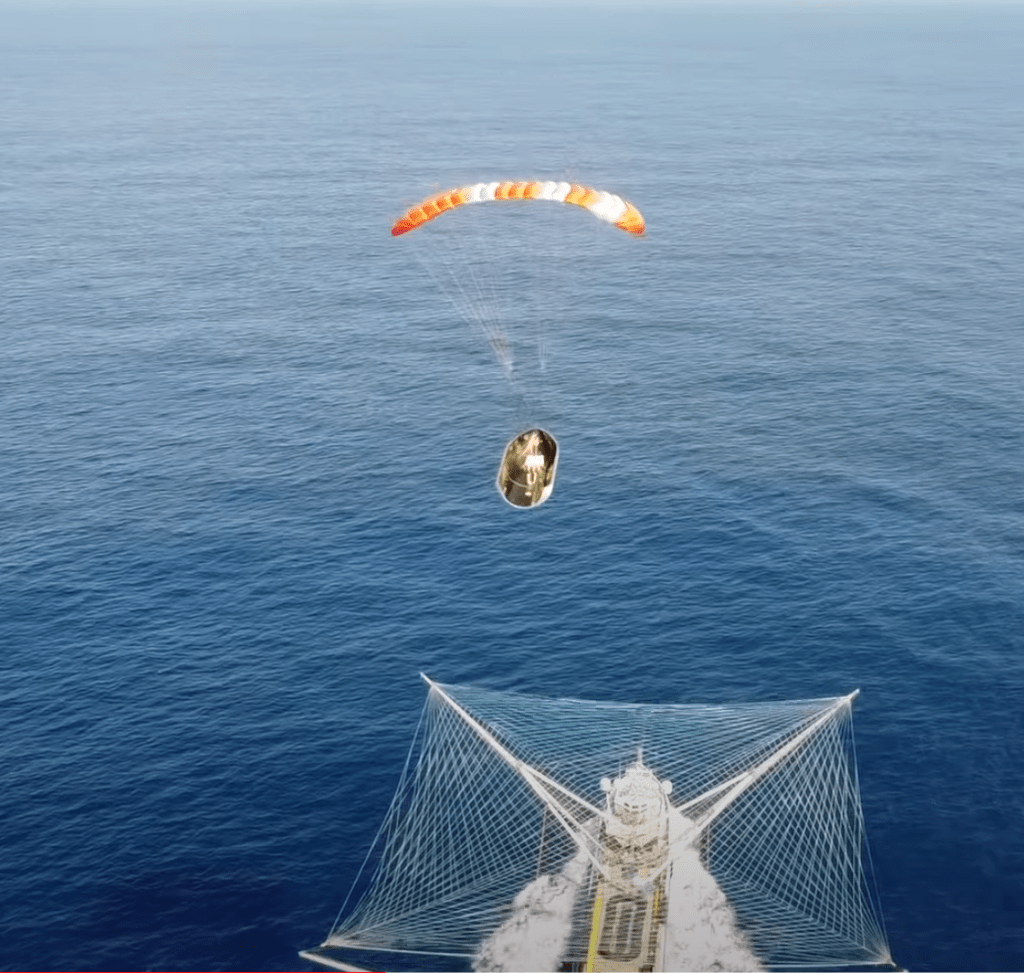
Ms. Tree catching a fairing on Starlink V1.0 L10 (Credit: SpaceX)
Starlink 20 Full Mission Profile
Hr/Min/Sec Event
– 00:38:00 SpaceX Launch Director verifies go for propellant load.
– 00:35:00 RP-1 (rocket grade kerosene) loading underway.
– 00:35:00 1st stage LOX (liquid oxygen) loading underway
– 00:16:00 2nd stage LOX loading underway
– 00:07:00 Falcon 9 begins engine chill prior to launch
– 00:01:00 Command flight computer to begin final prelaunch checks
– 00:01:00 Propellant tank pressurization to flight pressure begins
– 00:00:45 SpaceX Launch Director verifies go for launch
– 00:00:03 Engine controller commands engine ignition sequence to start
– 00:00:00 Falcon 9 Liftoff
Launch, Landing, and Satellite Deployment*
Hr/Min/Sec Event
00:01:13 Max Q (moment of peak mechanical stress on the rocket)
00:02:32 1st stage main engine cutoff (MECO)
00:02:36 1st and 2nd stages separate
00:02:43 2nd stage engine starts (SES-1)
00:03:09 Fairing deployment
00:06:40 1st stage entry burn complete
00:08:24 1st stage landing
00:08:47 2nd stage engine cutoff (SECO-1)
00:45:31 2nd stage engine starts (SES-2)
00:45:32 2nd stage engine cutoff (SECO-2)
01:04:28 Starlink 20 payload deploy
* All times are approximate






I think there’s a mismatch on the ASDS assigned. In the stats is reported OCISLY… 😉
Is there an explanation on where the second name, “Starlink RF Mission 3-1”, comes from? Googling around I can find some speculation on forms but personally I don’t understand where the name even came from.
It comes from the FCC applications.
What does RF mean? (Starlink RF Mission 3-1)
These pages are still so informative, all the way to the very bottom! I also came looking for scrub information and why. Is that something that can easily be added? if not that’s ok too!